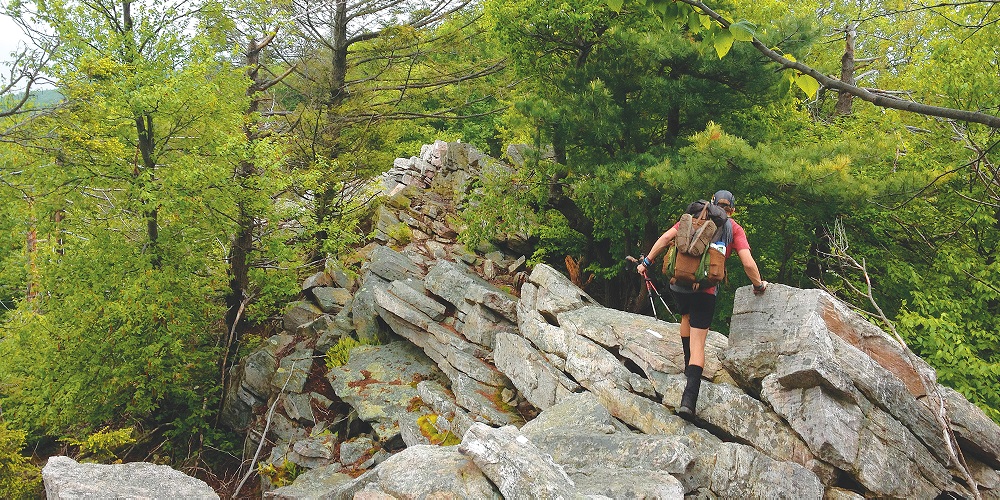
The Appalachian Trail (A.T.) corridor may harbor more rare, threatened and endangered species than any other National Park Service unit. By protecting rare species, and biodiversity in general, the ecosystems in which they occur remain healthier and more resilient to changing environmental conditions.
A.T. lands support populations of nine federally-listed and 360 state-listed species of rare plants and animals. Equally important, the A.T. corridor is home to more than 80 globally rare species.
Populations of rare species can be damaged or die out because of threats such as invasive species, poaching, recreational impacts, development, and climate change. Protecting individual populations of rare species is one of the ways to ward off extinction, maintain global biodiversity and ecosystem health.
To help protect rare species populations, the Appalachian Trail Conservancy (ATC) coordinates a volunteer-based monitoring program to track the vitality of the most rare and most threatened plant populations.
Since 1991, more than 200 volunteers have been trained to identify rare species as well as some of the likely threats to these plant populations. Volunteers are then asked to report their rare plant observations, using National Park Service monitoring protocols, after locating a rare plant site. If threats to the plant populations are reported by volunteers, ATC takes action to address the problem.
For example, the A.T. has been relocated away from populations to protect them from being accidentally trampled by hikers, rare plants have been fenced in to protect them from deer browsing, and invasive species have been removed before they could take root and choke out entire rare plant populations.

ATC relies heavily on volunteers to monitor and control invasive plants along the A.T. Each year, several workshops are held to educate people about these species and how to address the problem of invasive plants. They have also adopted an inventory protocol modeled after the reporting guidelines on the Early Detection and Distribution Mapping Systems (EDDMapS) website. This user-friendly system allows the organization and volunteers to collect and share data with a wide range of partners.
Once invasive plants are identified along the Appalachian Trail, ATC and volunteers organize work projects to control the highest priority infestations. Priority is given to areas where rare plants or other sensitive resources occur and where new invasive plant infestations can be easily controlled before they spread.
ATC regional offices have specific information about each program. Contact a regional office near you to learn more about monitoring and management opportunities in your area. And to learn more about ATC’s monitoring programs, click here.